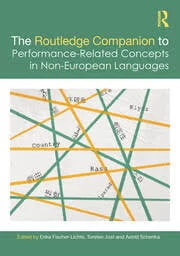In her latest work, McGaughey examines the history and meaning of the Japanese aesthetic, Yūgen 幽玄
Assistant Professor of Asian Studies, Hanna McGaughey’s research interests include gender history, intellectual history, performing arts, and digital humanities. For her latest publication, Hanna has contributed to the Handbook on Performance-Related Concepts in Non-European Languages, with a chapter entitled “Yūgen.” 幽玄 She reaches back to sixth and seventh century China to find the origins of the concept that in the Japanese Heian period was used in poetic thought. Eventually, Zeami 世阿弥 (1363?–1443?), a performer during the first half of the Muromachi era, was the first to apply the word’s meanings to work on the stage.
Yūgen 幽玄 describes an aesthetic that is aristocratic, feminine, profound, otherworldly, and subtly sexual. Yet depending on the context, the word’s meaning seems to shift. While Zeami sought to integrate yūgen into noh in order to please the aristocratic tastes of his martial patrons, his son-in-law Zenchiku expanded the meaning to find yūgen in all things, even rocks, trees, gold, gods, and demons and pushing yūgen into the realm of the grotesque in his play “Teika.”
In her doctoral thesis at the University of Trier, she examined the onstage construction of gender in noh theater as described by noh performer, playwright, director, and critic Zeami in his theoretical writings. Arriving at Bates in 2023, Hanna came from a position as a postdoctoral researcher at Hosei University in Tokyo, where she digitized manuscripts from the fifteenth through eighteenth centuries constituting a part of Zeami’s textual heritage.
“Yūgen.” In Handbook on Performance-Related Concepts in Non-European Languages, edited by Erika Fischer-Lichte, Torsten Jost, and Astrid Schenka, 482-7. Routledge, 2024.


